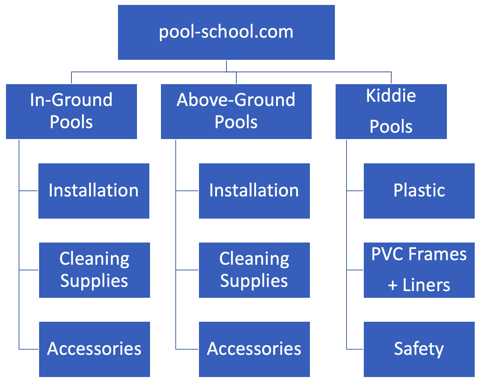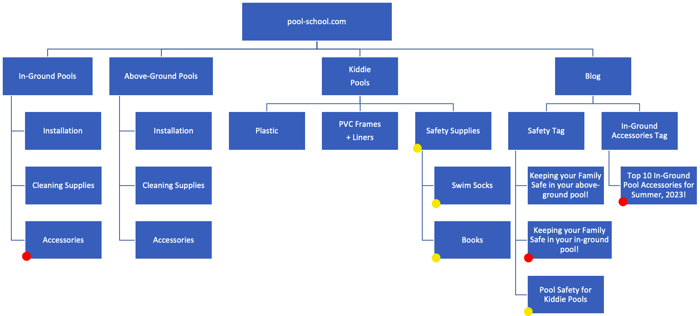Internal Linking: Strategies for the Future of SEO
We Demystify Siloing, Entity SEO, Topic Clusters, and Semantic SEO to Help You Understand and Utilize Internal Linking Effectively.
Internal linking is the process of linking one page of a website to another page on the same website. In simpler terms, internal links are bridges between different pages on your site, creating interconnected content. The way you organize and interlink your content can significantly impact your site’s usability and your SEO rankings. In this post, we will delve into four key concepts: Siloing, Entity SEO, Topic Clusters, and Semantic SEO, and how effective internal linking can be employed to maximize the benefits of these strategies.
Internal links serve multiple crucial functions. They help in navigating the website, defining the architecture and hierarchy of the website, and distributing page authority and ranking power throughout the site. A well-structured internal linking strategy not only facilitates seamless navigation but also guides search engine bots as they crawl and index your website. By doing so, internal links play a crucial role in how search engines understand, rank, and display your site in search results.
It significantly enhances the user experience by providing additional reading options and guiding visitors through a journey that makes sense to them. The ripple effect of this is lower bounce rates as visitors are more likely to explore more pages. Furthermore, effective internal linking ensures better indexing, as search engines can discover and index your pages faster. This, in turn, improves the likelihood of ranking higher on search engine results pages (SERPs), which is the ultimate goal of SEO.
With a solid grounding on the fundamentals of internal linking and its role in SEO and user experience (UX), it's time to tread deeper into optimizing internal linking strategies. The nuances of Siloing, Entity SEO, Topic Clusters, and Semantic SEO each hold a distinct piece of the puzzle, offering a multifaceted view into the world of SEO. As we look at each of these concepts, you will gain actionable insights and pragmatic strategies to perfect your internal linking structure, catapulting your site up the rankings.

Siloing
Siloing is a website architecture strategy that structures your site into distinct categories or 'silos', where related information is grouped together. This method not only helps in organizing your content logically but also helps search engines understand the topical depth of your website.
Within a silo, link from sub-topic pages up to the main category page and vice versa. This vertical linking helps in passing the link juice and also establishes the relationship between the pages within a silo. Try to avoid linking across different silos as this can dilute the thematic relevance.
The example below shows a siloing for a website about pools. You can see that each silo has pages that relate only to the category it is placed under. This shows your visitors and Google that they can find relevant information about each category by navigating to pages within a particular vertical silo.
When setting up your silos, it is important to use consistent naming conventions across all silos and categories for clarity and cohesion. For example, in the silos below, "Clean Supplies" is used in each instance, as opposed to using "Cleaning Supplies" in one silo, and "Pool Chemicals" in another--if the website featured below were to add a blog, the category name should match the relevant silo-related pages. Failing to stay uniform in your naming conventions, tagging, and site organization, can cause confusion for your visitors and search engines.

For a comprehensive guide to Siloing, check out Bruce Clay’s Guide on Website Silo Architecture.
Entity SEO
Entity SEO revolves around creating content around specific entities – people, places, or things. It’s about establishing a clear context around a particular entity and linking it to related entities. Entity SEO represents a significant shift towards a more semantic and relationship-oriented approach to SEO, aligning with the evolving nature of search engines. It’s a step closer to how humans perceive the interconnectedness of information. While the idea is not new--Google first introduced the idea in 2012--it is still relevant and will continue to influence the future of search.
Create dedicated pages for key entities and link to them from relevant content across your site. Where relevant, link between different entity pages to provide a broader context. Here are some entity content ideas to include as relevant to your entity:
- A definition or key entity details
- A timeline
- Disambiguation
- Internal links to pages with additional information
- Any synonyms, slang, localization, or other info that helps provide context
- Supporting documents like images, infographics, videos, audio, etc.
- Clear categories for blog pages
- External links and references
Topic Clusters
Topic clusters involve creating a 'pillar' page covering a broad topic, with 'cluster' pages that delve into the sub-topics in more detail. This structure showcases your content's breadth and depth.
Link from each cluster page back to the pillar page using descriptive anchor text. Where relevant, interlink cluster pages to provide a more comprehensive understanding of the topic.
See the small example matching clusters below.

For an in-depth guide regarding topic clusters, check out the Semrush Blog post, Topic Clusters for SEO: What They Are & How to Create Them.
Semantic SEO
Semantic SEO focuses on optimizing content for the intent behind user queries rather than merely targeting keywords. It involves understanding and matching the user intent with your content.
Provide links within the content to related pages that help in understanding the context better. Use internal links to connect pages on topics that are semantically related, even if they aren’t obviously connected by keywords.This will look a lot like the Topic Cluster strategy, providing additional context spanning across pages that are members of different clusters.
For a detailed look at Semantic SEO, see our comprehensive guide: Semantic SEO Principles.
I hope we've been able to help demystify these terms that often involve intricate strategies, giving you insights and tools to effectively implement internal linking. The symbiotic relationship among these strategies and effective internal linking ensures a seamless UX while simultaneously communicating context and understanding to search engines. Good luck in your efforts to add context, understanding, and intent to your content relationships!

 By
By


